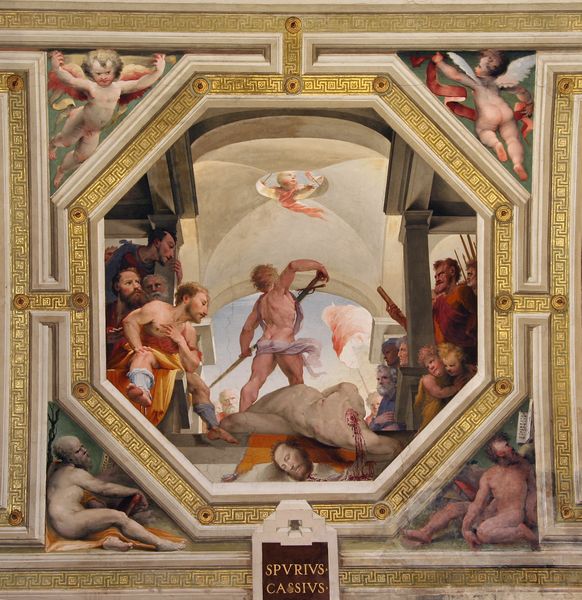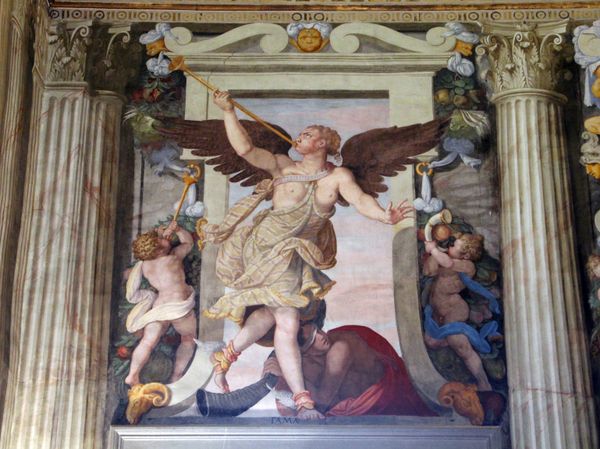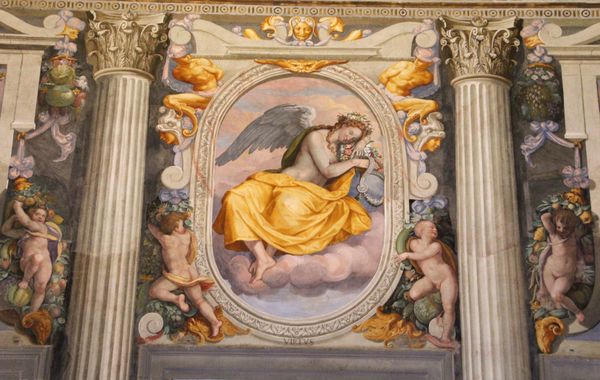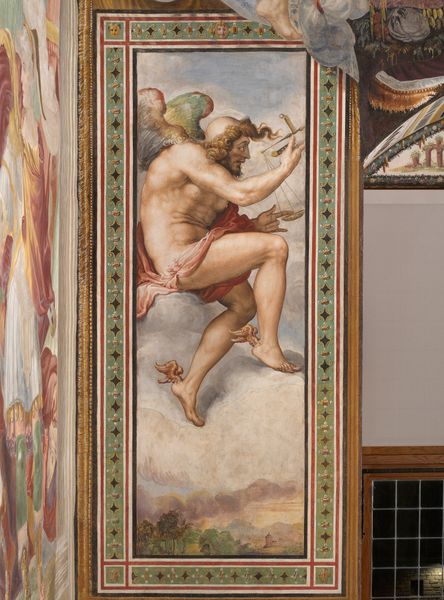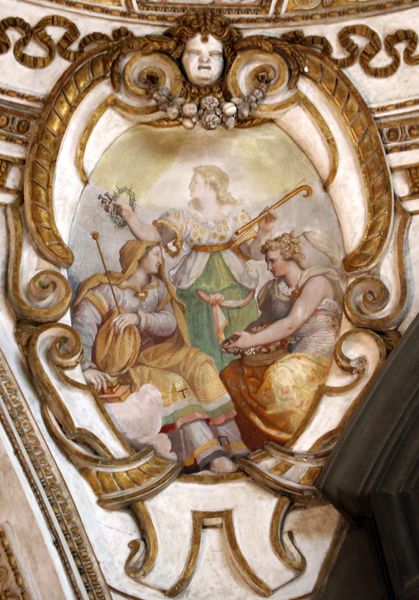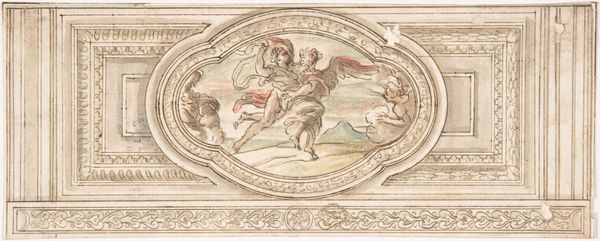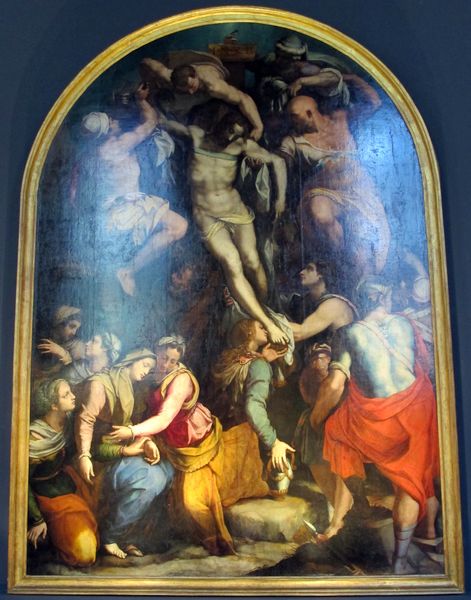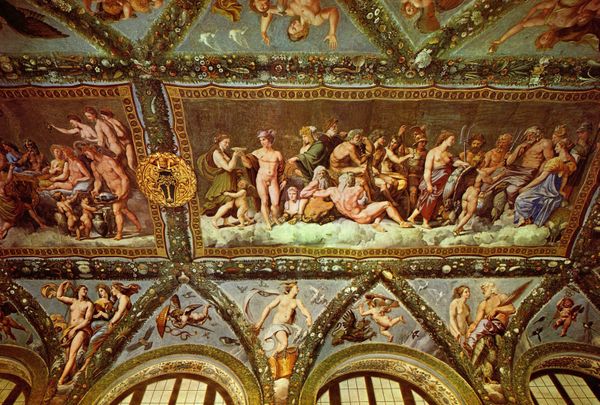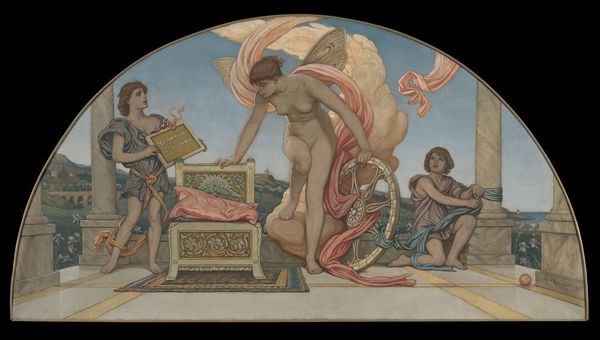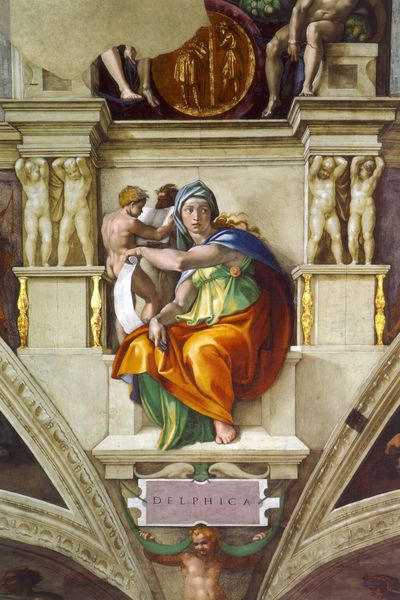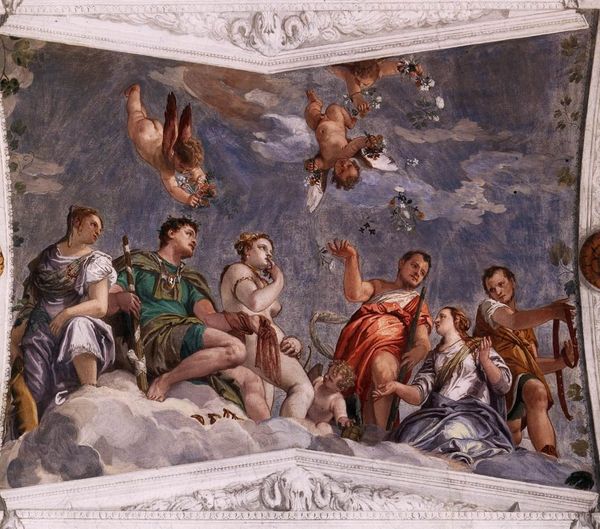
painting, fresco
#
portrait
#
allegory
#
narrative-art
#
painting
#
mannerism
#
fresco
#
11_renaissance
#
oil painting
#
geometric
#
italian-renaissance
#
nude
Copyright: Public domain
Domenico Beccafumi painted this panel, "Concordia," in Italy during the early 16th century. It uses classical imagery to promote harmony. The figure in the center, draped in a green cloth, represents Concordia, the Roman goddess of agreement. She’s surrounded by putti, or cherubic children, who hold scrolls with Latin inscriptions. The inscriptions emphasize the benefits of mutual benevolence, mitigating rumors, and aging well. This work reflects the humanist values of the Renaissance, which emphasized classical learning and civic virtue. It might have been commissioned for a public space, such as a town hall, or a private palazzo, where it would serve as a reminder of the importance of social harmony. Art historians can research patronage records, civic documents, and contemporary writings to understand more about the context in which "Concordia" was created and how it was intended to function within its society. By studying the historical and social context of art, we can learn more about its meaning.
Comments
No comments
Be the first to comment and join the conversation on the ultimate creative platform.

